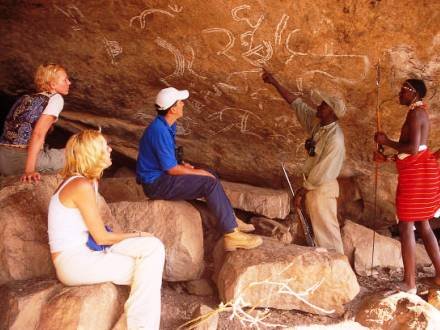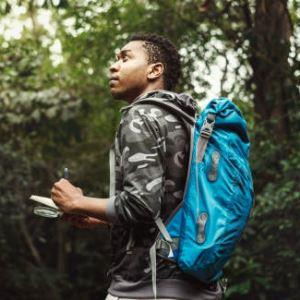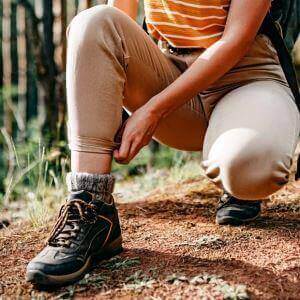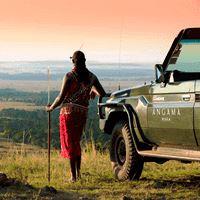 Kenya is an exciting destination for Belgian tourists who want to experience rich traditions, diverse cultures, and vibrant local life. From ancient coastal towns to indigenous tribal festivals and colorful markets, Kenya offers something for every culture lover. Whether you're visiting for the first time or returning for another adventure, this guide will help you navigate Kenya's cultural treasures. One of the first stops for culture-minded Belgians should be Nairobi, Kenya's bustling capital. Here, the Karen Blixen Museum offers insight into colonial history, and the Bomas of Kenya hosts daily performances of traditional dances and music representing different ethnic groups. For a deeper dive into Kenya's coastal heritage, a visit to Fort Jesus in Mombasa is essential. This 16th-century fortress showcases a blend of Portuguese and Swahili architecture and is a powerful symbol of Kenya's historical crossroads. To explore Kenya's tribal diversity, Belgians can head to the Maasai Mara, home to the world-renowned Maasai people. Visiting a Maasai village allows tourists to engage in traditional ceremonies, learn about cattle-based lifestyles, and even try on the iconic red shuka garments. If you're traveling in May, the Turkana Festival in Lodwar brings together over a dozen tribes in a celebration of music, dance, storytelling, and crafts. This event is a fantastic opportunity for Belgians to witness Kenya's ethnic mosaic in a single setting. For those with a passion for arts and crafts, Kenya's local markets are a must. The Maasai Market, which rotates across Nairobi neighborhoods, offers hand-beaded jewelry, paintings, fabrics, and carvings. Belgian tourists can also explore Kazuri Beads, a workshop and shop where Kenyan women craft ceramic jewelry that's both beautiful and ethical. Other great shopping spots include Kisumu and Nakuru, where stalls are filled with kitenge fabric, hand-carved wooden pieces, and intricate soapstone sculptures. Lamu Old Town, a UNESCO World Heritage Site on the northern coast, is another gem for Belgian travelers. With its winding alleyways, Swahili-style architecture, and dhows docked along the harbor, Lamu provides a serene yet culturally rich experience. It's the perfect destination for travelers who want to combine history, architecture, and the charm of a coastal town. Before you go, it’s important to plan your cultural journey with awareness, curiosity, and respect. Kenyan culture is incredibly diverse, and understanding local etiquette will enhance your experience and create more meaningful connections with the people you meet. Learning a few basic Swahili phrases, such as greetings like "Jambo" (hello) or "Asante" (thank you), can go a long way in showing appreciation and breaking the ice with locals. Always be mindful of the customs practiced by various communities, especially when visiting tribal villages or attending cultural events. Dressing modestly, asking permission before taking photographs, and respecting boundaries during traditional ceremonies are all important ways to demonstrate cultural sensitivity. When offered food or invited to participate in a ritual, showing gratitude and open-mindedness helps foster mutual respect and understanding. Kenya is also a country of many faiths and beliefs, so Belgian travelers should be aware of religious customs, especially when visiting sacred sites like mosques or temples. Removing your shoes, dressing appropriately, and maintaining a quiet, respectful demeanor are simple yet impactful practices. Shopping at local markets and buying handmade crafts directly from artisans supports the local economy and creates an opportunity for cultural exchange. Always engage with sellers politely and avoid haggling aggressively. These travel tips for Belgians coming to Kenya ensure a respectful, immersive, and unforgettable experience that leaves a positive impact on both the traveler and the host community.
Kenya is an exciting destination for Belgian tourists who want to experience rich traditions, diverse cultures, and vibrant local life. From ancient coastal towns to indigenous tribal festivals and colorful markets, Kenya offers something for every culture lover. Whether you're visiting for the first time or returning for another adventure, this guide will help you navigate Kenya's cultural treasures. One of the first stops for culture-minded Belgians should be Nairobi, Kenya's bustling capital. Here, the Karen Blixen Museum offers insight into colonial history, and the Bomas of Kenya hosts daily performances of traditional dances and music representing different ethnic groups. For a deeper dive into Kenya's coastal heritage, a visit to Fort Jesus in Mombasa is essential. This 16th-century fortress showcases a blend of Portuguese and Swahili architecture and is a powerful symbol of Kenya's historical crossroads. To explore Kenya's tribal diversity, Belgians can head to the Maasai Mara, home to the world-renowned Maasai people. Visiting a Maasai village allows tourists to engage in traditional ceremonies, learn about cattle-based lifestyles, and even try on the iconic red shuka garments. If you're traveling in May, the Turkana Festival in Lodwar brings together over a dozen tribes in a celebration of music, dance, storytelling, and crafts. This event is a fantastic opportunity for Belgians to witness Kenya's ethnic mosaic in a single setting. For those with a passion for arts and crafts, Kenya's local markets are a must. The Maasai Market, which rotates across Nairobi neighborhoods, offers hand-beaded jewelry, paintings, fabrics, and carvings. Belgian tourists can also explore Kazuri Beads, a workshop and shop where Kenyan women craft ceramic jewelry that's both beautiful and ethical. Other great shopping spots include Kisumu and Nakuru, where stalls are filled with kitenge fabric, hand-carved wooden pieces, and intricate soapstone sculptures. Lamu Old Town, a UNESCO World Heritage Site on the northern coast, is another gem for Belgian travelers. With its winding alleyways, Swahili-style architecture, and dhows docked along the harbor, Lamu provides a serene yet culturally rich experience. It's the perfect destination for travelers who want to combine history, architecture, and the charm of a coastal town. Before you go, it’s important to plan your cultural journey with awareness, curiosity, and respect. Kenyan culture is incredibly diverse, and understanding local etiquette will enhance your experience and create more meaningful connections with the people you meet. Learning a few basic Swahili phrases, such as greetings like "Jambo" (hello) or "Asante" (thank you), can go a long way in showing appreciation and breaking the ice with locals. Always be mindful of the customs practiced by various communities, especially when visiting tribal villages or attending cultural events. Dressing modestly, asking permission before taking photographs, and respecting boundaries during traditional ceremonies are all important ways to demonstrate cultural sensitivity. When offered food or invited to participate in a ritual, showing gratitude and open-mindedness helps foster mutual respect and understanding. Kenya is also a country of many faiths and beliefs, so Belgian travelers should be aware of religious customs, especially when visiting sacred sites like mosques or temples. Removing your shoes, dressing appropriately, and maintaining a quiet, respectful demeanor are simple yet impactful practices. Shopping at local markets and buying handmade crafts directly from artisans supports the local economy and creates an opportunity for cultural exchange. Always engage with sellers politely and avoid haggling aggressively. These travel tips for Belgians coming to Kenya ensure a respectful, immersive, and unforgettable experience that leaves a positive impact on both the traveler and the host community.
Top Cultural Sites and Activities for Belgian Tourists in Kenya
| Cultural Experience | Location | Ideal For Belgian Visitors | Notable Feature |
|---|---|---|---|
| Karen Blixen Museum | Nairobi | History Enthusiasts | Colonial-era artifacts |
| Fort Jesus | Mombasa | Architecture Lovers | Swahili and Portuguese design |
| Maasai Village Visit | Maasai Mara | Culture Seekers | Traditional ceremonies |
| Turkana Festival | Lodwar | Event Explorers | Multi-tribal celebration |
| Kazuri Beads Factory | Nairobi | Ethical Shoppers | Handmade beads by Kenyan women |
| Lamu Old Town | Lamu Island | UNESCO Site Hunters | Preserved Islamic heritage |
| Maasai Market | Nairobi, other cities | Art & Souvenir Collectors | Variety of handcrafted goods |
| Bomas of Kenya | Nairobi | Performance Fans | Traditional music and dance shows |
Top Cultural Attractions in Kenya for Belgian Tourists to Explore
Kenya is a country brimming with history and heritage, offering Belgian tourists a wealth of must-see cultural attractions. From Nairobi to the coast and the arid north, every region presents opportunities to witness the country's rich traditions and historical sites. These destinations are not only visually stunning but also offer deep insight into Kenya's cultural evolution over time. Begin your cultural journey in Nairobi, where the Karen Blixen Museum provides a nostalgic window into Kenya's colonial past. Once the home of the Danish author of "Out of Africa," the museum captures the spirit of early 20th-century life and literature. Nearby, the Bomas of Kenya hosts daily performances of traditional dances, songs, and folklore from various Kenyan tribes, making it a great starting point for Belgian tourists curious about local traditions. Moving to the coast, Mombasa’s Fort Jesus is a must-visit historical site. Built in the 16th century by the Portuguese, the fort has served as a military stronghold, prison, and museum. Its unique blend of European and Swahili architecture makes it a living testament to Kenya’s complex colonial and trading history. For a more tranquil yet deeply cultural experience, Belgian visitors should head to Lamu Old Town. With narrow alleys, stone buildings, and dhows anchored along the shore, this UNESCO World Heritage Site offers a taste of traditional Swahili life that has remained largely unchanged for centuries. To experience Kenya’s indigenous cultures, head inland to the Maasai Mara. Visiting a Maasai village lets travelers witness age-old customs, including warrior dances, fire-making, and the use of medicinal herbs. This direct interaction provides a deeper understanding of Kenya’s ethnic diversity. If your timing is right, attend the Turkana Festival in northern Kenya. This annual event brings together over a dozen tribes in a colorful celebration of music, dance, and shared heritage. Kenya also offers rich opportunities for art and handicraft lovers. Markets such as the Maasai Market in Nairobi or the craft stalls in Nakuru and Kisumu provide a wide selection of locally made jewelry, carvings, and textiles. Belgian tourists can support ethical craftsmanship by visiting Kazuri Beads in Nairobi, where local women produce beautiful ceramic beads and pottery. For European travelers with a passion for history, tradition, and the arts, Kenya is an extraordinary destination teeming with rich and varied cultural experiences. The country's vibrant tapestry of over 40 ethnic communities, each with its own language, customs, and dress, offers a depth of cultural exploration that is both educational and unforgettable. Whether walking through the narrow alleys of Lamu Old Town or sitting among the crowds at a tribal festival in Turkana, Europeans will encounter living traditions that have been preserved for centuries. Kenya's cultural landmarks span a wide spectrum from the colonial-era Karen Blixen Museum to the ancient Swahili settlements along the coast. These must-see Kenyan cultural landmarks for Europeans provide travelers with opportunities to engage with both Kenya's past and present. Exploring these sites allows visitors to understand the cultural, historical, and artistic foundations of Kenyan society. Adding to the richness are local artisans and performers, whose work continues to reflect the values and stories of their communities. Whether it's watching a dance troupe at Bomas of Kenya, purchasing hand-beaded jewelry in a Nairobi market, or listening to elders share oral histories in a remote village, Belgian and European tourists alike are sure to return home with vivid memories and a deeper respect for Kenya's cultural legacy.
What Are the Must-Visit Cultural Sites in Kenya for Belgians?
Exploring Kenya's cultural heritage is a rewarding experience for Belgian tourists who want to discover the country beyond the typical safari trails and pristine beaches. Kenya is a vibrant cultural mosaic, boasting iconic landmarks, a wide variety of ethnic communities, and centuries-old traditions. From the highlands to the coastal towns, Belgian travelers can immerse themselves in a wealth of cultural experiences that are both educational and enriching. Whether you're wandering through the cobbled streets of Lamu Old Town, witnessing tribal dances at the Bomas of Kenya, or browsing artisan crafts at the Maasai Market, every moment brings a deeper understanding of Kenya's soul. This cultural journey promises to leave lasting impressions and meaningful memories.
- Karen Blixen Museum (Nairobi): This colonial-era house museum was the home of Danish author Karen Blixen, best known for her book "Out of Africa." It provides historical insight into early 20th-century settler life and the cross-cultural narratives that shaped colonial Kenya.
- Bomas of Kenya (Nairobi): A showcase of Kenya’s tribal heritage through live performances of traditional music, dances, and rituals. Visitors can experience the rhythms and attire of Kenya's major ethnic communities in a single venue.
- Fort Jesus (Mombasa): A UNESCO World Heritage Site, this 16th-century fortress represents centuries of cultural exchange between Africans, Arabs, and Europeans. It stands as a dramatic reminder of Kenya’s role in the Indian Ocean trade routes.
- Lamu Old Town (Lamu Island): A serene Swahili coastal town where life flows at the pace of tradition. Its Islamic architecture, bustling markets, and dhow harbors make it an exceptional destination for history lovers.
- Maasai Mara Village Visit: Located near the famous game reserve, these villages offer Belgian tourists the opportunity to learn about Maasai customs, try traditional dances, and see artisan beadwork up close.
- Turkana Cultural Festival (Lodwar): A vibrant annual gathering of over a dozen ethnic groups from Northern Kenya. It’s a celebration of indigenous identity, peace, and unity, offering travelers a once-in-a-lifetime cultural immersion.
- Kazuri Beads Factory (Nairobi): A socially responsible craft center where Kenyan women produce hand-painted ceramic beads. It’s a great stop for Belgian tourists looking to buy ethical, handmade souvenirs.
- Maasai Market (Nairobi and other cities): A rotating open-air market where local artists sell jewelry, fabrics, sculptures, and more. Ideal for souvenir shopping while supporting Kenyan artisans.
These sites offer Belgian visitors a diverse and authentic glimpse into Kenya’s rich past and dynamic present. From coastal forts to inland festivals, each location introduces travelers to a unique chapter of Kenya’s cultural journey. Belgian tourists will enjoy a deeper appreciation for the traditions, stories, and artistic expressions that shape everyday life across the country. Whether exploring Swahili architecture, watching vibrant dances, or supporting artisan communities, each cultural stop becomes a meaningful and educational part of the adventure. Kenya's cultural treasures promise to leave lasting impressions and treasured memories.
Best Kenyan Tribal Experiences for Belgian Travelers to Enjoy
For Belgian travelers, discovering Kenya's tribal heritage is an experience that goes far beyond sightseeing. It offers an opportunity to interact with some of the most iconic and diverse communities on the African continent. With over 40 ethnic groups, each with its own traditions, ceremonies, and languages, Kenya provides a rich tapestry of culture that is both engaging and deeply educational. Belgian tourists looking to move beyond typical travel experiences will find that immersing themselves in tribal life offers a more authentic and lasting connection to the country. One of the most popular options is visiting a Maasai village in the Maasai Mara region. These visits allow Belgian tourists to witness traditional dances, participate in fire-making demonstrations, and learn about the pastoral lifestyle and strong warrior customs of the Maasai people. Guests may also see how intricate beadwork and colorful attire are used to convey identity and status within the community. The Turkana Festival in northern Kenya is another must-see. Held annually in Lodwar, this celebration brings together multiple tribes including the Turkana, Samburu, Pokot, and Rendille, among others. For Belgian travelers, it's a rare chance to experience the convergence of different tribal identities through music, dance, food, and storytelling in a single event. Another rewarding destination is the Samburu region, where visitors can explore the customs of the semi-nomadic Samburu people. Known for their close ties to the Maasai, the Samburu exhibit unique traditions such as singing ceremonies and elaborate ornamentation. Visits here provide valuable insight into gender roles, community leadership, and traditional rites of passage. Belgian tourists may also consider cultural exchanges with the Pokot community, which is known for its elaborate initiation rituals and beautiful handwoven fabrics. These community visits often include storytelling sessions with village elders, who offer a glimpse into Kenya's rich oral history tradition. Experiencing Kenya’s tribes and traditions as a Belgian traveler means taking the time to listen, observe, and engage with local communities in a respectful and meaningful way. The beauty of these encounters lies not only in what is seen but in the conversations held, the customs witnessed, and the stories shared. Whether attending a vibrant festival filled with music and dance or enjoying a quiet tea with village elders, each interaction offers new perspectives and a sense of connection. These experiences go beyond surface-level tourism; they allow Belgians to better appreciate the depth and beauty of Kenya’s cultural diversity. It’s not about taking photos or collecting souvenirs it’s about immersing oneself in a way of life that has been passed down through generations. Respecting cultural boundaries, participating when invited, and showing genuine interest in traditions helps foster mutual understanding. From colorful festivals to quiet village encounters, each moment spent with Kenya’s tribal communities is a step toward understanding the spirit of the nation. For Belgian tourists, this deeper engagement can be transformative, reshaping the way they think about community, identity, and heritage. It leaves not only cherished memories but also a lasting sense of respect and admiration for the people and cultures of Kenya.
Which Tribal Villages and Events Are Great for Belgian Tourists?
Kenya’s tribal life is one of the most authentic cultural experiences Belgian tourists can enjoy. The country is home to more than 40 ethnic communities, each with its own rituals, language, and way of life. From pastoralist nomads in the north to highland agriculturalists, the diversity is incredible. For Belgians seeking a deeper connection with Kenya’s indigenous heritage, these destinations and events offer unmatched opportunities for cultural exchange.
- Maasai Mara Village Visits: These visits let tourists witness warrior dances, learn about cattle-based economies, and explore traditional homesteads. The Maasai are known for their striking red garments and intricate beadwork.
- Samburu Cultural Encounters: Located north of the Maasai Mara, the Samburu people share many traditions with the Maasai but maintain distinct songs, attire, and customs. Belgian visitors can attend singing ceremonies and observe their vibrant dress and jewelry.
- Turkana Cultural Festival (Lodwar): Held annually, this festival unites over a dozen tribes for a colorful display of dance, food, music, and peace-building rituals. It’s one of the best Kenyan tribal ceremonies tourists can attend.
- Pokot and Rendille Communities: These lesser-known groups also welcome visitors interested in storytelling, initiation rites, and handicrafts that are unique to their people.
These experiences offer Belgian tourists a respectful, meaningful way to engage with Kenya’s living traditions. Whether through dance, dress, or dialogue, visitors are invited to connect with communities whose heritage has been preserved through generations. These interactions foster cross-cultural understanding, leaving tourists with a deeper appreciation of Kenya’s identity.
Unique Kenyan Markets and Art Scenes Belgians Should Discover
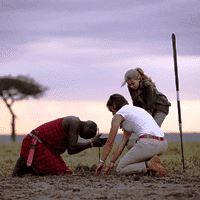 For Belgian tourists with a passion for art, culture, and local craftsmanship, Kenya offers a colorful and dynamic marketplace experience that reflects the creativity of its people. Beyond the typical souvenirs, these markets and art scenes offer a deeper insight into the cultural expressions of Kenyan communities, blending tradition with contemporary flair. One of the most popular destinations for handmade goods is the Maasai Market, held on different days across various neighborhoods in Nairobi. Belgian visitors can browse stalls filled with beaded jewelry, kitenge fabrics, wood carvings, paintings, and woven baskets. Each item tells a story of identity, history, and heritage, making these pieces meaningful mementos of a Kenyan journey. For a more curated experience, Kazuri Beads Factory in Nairobi is a must-visit. The factory empowers local women by training and employing them to create hand-painted ceramic beads and pottery. This initiative not only supports ethical shopping but also allows Belgians to witness firsthand how traditional art is passed down and adapted for modern markets. In western Kenya, cities like Kisumu and Nakuru offer bustling open-air markets that are perfect for discovering local flair. Tourists will find beautifully dyed fabrics, colorful wrap skirts, soapstone sculptures, and hand-carved home decor items. These regions offer an authentic shopping experience away from the tourist trail. Art galleries and cooperatives are also thriving in Kenya, especially in urban centers. Belgian art lovers can explore galleries like Banana Hill Art Gallery near Nairobi, showcasing contemporary African art by local painters and sculptors. These exhibits provide cultural context and often reflect social themes relevant to Kenyan society today. When shopping, it’s always good practice to engage vendors with respect and curiosity. Many artisans enjoy explaining the cultural background of their products, and this exchange can enhance your appreciation for the item you're buying. While bargaining is common, maintaining fairness and politeness helps foster a positive interaction. In all, these markets and artistic spaces provide more than just a chance to shop they're a way to connect with local communities and understand the values embedded in their work. Cultural travel tips for Belgians going to Kenya include supporting local craftspeople, learning about the symbolism in traditional designs, and embracing the opportunity to explore Kenya's artistic heartbeat. By engaging with these marketplaces and art scenes, Belgian travelers not only take home beautiful pieces but also participate in sustaining Kenya's creative heritage. Each handcrafted item reflects generations of knowledge, creativity, and cultural pride. When Belgians choose to purchase locally made art, textiles, or jewelry, they contribute to the livelihoods of artisans and small-scale entrepreneurs whose work often supports entire families or communities. Beyond economic impact, these exchanges provide opportunities for meaningful conversations. Artisans frequently share the stories, symbols, and processes behind their creations, enriching the travel experience and allowing visitors to form genuine connections. Markets become more than shopping venues they are dynamic cultural spaces where traditions are preserved, revived, and celebrated. Visiting galleries, studios, and workshops allows Belgian tourists to witness how Kenyan artists are innovating with modern themes while honoring ancestral techniques. This blend of old and new helps keep cultural practices alive while allowing them to evolve. Whether it’s a handwoven basket, a beaded bracelet, or a striking painting, each piece carries with it a story and spirit of Kenya. For Belgian travelers, these encounters offer lasting value that extends well beyond the journey itself, creating memories anchored in authenticity and mutual respect.
For Belgian tourists with a passion for art, culture, and local craftsmanship, Kenya offers a colorful and dynamic marketplace experience that reflects the creativity of its people. Beyond the typical souvenirs, these markets and art scenes offer a deeper insight into the cultural expressions of Kenyan communities, blending tradition with contemporary flair. One of the most popular destinations for handmade goods is the Maasai Market, held on different days across various neighborhoods in Nairobi. Belgian visitors can browse stalls filled with beaded jewelry, kitenge fabrics, wood carvings, paintings, and woven baskets. Each item tells a story of identity, history, and heritage, making these pieces meaningful mementos of a Kenyan journey. For a more curated experience, Kazuri Beads Factory in Nairobi is a must-visit. The factory empowers local women by training and employing them to create hand-painted ceramic beads and pottery. This initiative not only supports ethical shopping but also allows Belgians to witness firsthand how traditional art is passed down and adapted for modern markets. In western Kenya, cities like Kisumu and Nakuru offer bustling open-air markets that are perfect for discovering local flair. Tourists will find beautifully dyed fabrics, colorful wrap skirts, soapstone sculptures, and hand-carved home decor items. These regions offer an authentic shopping experience away from the tourist trail. Art galleries and cooperatives are also thriving in Kenya, especially in urban centers. Belgian art lovers can explore galleries like Banana Hill Art Gallery near Nairobi, showcasing contemporary African art by local painters and sculptors. These exhibits provide cultural context and often reflect social themes relevant to Kenyan society today. When shopping, it’s always good practice to engage vendors with respect and curiosity. Many artisans enjoy explaining the cultural background of their products, and this exchange can enhance your appreciation for the item you're buying. While bargaining is common, maintaining fairness and politeness helps foster a positive interaction. In all, these markets and artistic spaces provide more than just a chance to shop they're a way to connect with local communities and understand the values embedded in their work. Cultural travel tips for Belgians going to Kenya include supporting local craftspeople, learning about the symbolism in traditional designs, and embracing the opportunity to explore Kenya's artistic heartbeat. By engaging with these marketplaces and art scenes, Belgian travelers not only take home beautiful pieces but also participate in sustaining Kenya's creative heritage. Each handcrafted item reflects generations of knowledge, creativity, and cultural pride. When Belgians choose to purchase locally made art, textiles, or jewelry, they contribute to the livelihoods of artisans and small-scale entrepreneurs whose work often supports entire families or communities. Beyond economic impact, these exchanges provide opportunities for meaningful conversations. Artisans frequently share the stories, symbols, and processes behind their creations, enriching the travel experience and allowing visitors to form genuine connections. Markets become more than shopping venues they are dynamic cultural spaces where traditions are preserved, revived, and celebrated. Visiting galleries, studios, and workshops allows Belgian tourists to witness how Kenyan artists are innovating with modern themes while honoring ancestral techniques. This blend of old and new helps keep cultural practices alive while allowing them to evolve. Whether it’s a handwoven basket, a beaded bracelet, or a striking painting, each piece carries with it a story and spirit of Kenya. For Belgian travelers, these encounters offer lasting value that extends well beyond the journey itself, creating memories anchored in authenticity and mutual respect.
Where Can Belgians Shop for Kenyan Art, Jewelry, and Souvenirs?
Shopping in Kenya offers Belgian tourists more than the chance to pick up souvenirs it presents a meaningful window into the country's vibrant culture and artistic traditions. From open-air markets to ethical artisan workshops, Kenya provides safe and enriching shopping experiences that allow visitors to take a piece of its heritage home. One of the most exciting places to explore is the Maasai Market, held at different locations throughout Nairobi on various days of the week. Here, Belgians can find a wide array of handcrafted jewelry, woven baskets, sculptures, fabrics, and artwork. The market is lively and colorful, with artisans proudly presenting their unique creations, each piece reflecting the cultural identity of its maker. Shoppers are encouraged to engage with vendors, learn about the symbolism behind each craft, and practice respectful bargaining. For those who prefer a quieter, more organized environment, Kazuri Beads in Nairobi is an excellent option. This certified fair-trade enterprise empowers local women to create hand-painted ceramic beads and pottery. A guided tour of the factory reveals the meticulous process behind each bead, and visitors can purchase directly from the on-site shop, knowing their money supports sustainable employment. In Kisumu and Nakuru, Belgian travelers can explore regional markets offering dyed fabrics, carved wooden art, and soapstone sculptures unique to western Kenya. These spots are generally friendly, welcoming, and provide insight into the daily commerce and creativity of local life. While these markets may be less known than those in Nairobi, they offer equally rich cultural encounters. Galleries such as Banana Hill Art Gallery provide an opportunity to experience modern Kenyan art. Paintings and sculptures displayed here often touch on social issues, contemporary life, and ancestral themes. For Belgian tourists with an appreciation for fine art, these spaces are excellent for purchasing one-of-a-kind pieces. It’s important to approach each interaction with openness and cultural sensitivity. Asking questions, showing genuine interest, and respecting local customs will ensure a more fulfilling experience. Many artisans appreciate the chance to explain the stories behind their crafts, turning a simple purchase into a memorable exchange. These artistic spaces and marketplaces are not only ideal for shopping but also represent safe cultural experiences in Kenya for Belgian tourists. They allow travelers to connect with Kenya's communities in a respectful and engaging way, offering a rich blend of tradition, creativity, and human connection. Each handcrafted item becomes more than just a souvenir it becomes a symbol of shared culture and appreciation.
Frequently Asked Questions About Cultural Visits to Kenya by Belgian Tourists
Exploring Kenya's diverse cultures is an exciting and enriching experience for Belgian travelers. With vibrant traditions, centuries-old heritage, and friendly communities, Kenya offers countless opportunities to engage in meaningful cultural exchange. However, many Belgian tourists have questions about what to expect, how to participate respectfully, and how to make the most of their trip. Here are some questions that Belgian tourists commonly ask before and during their cultural journey through Kenya.
- What Are the Best Cultural Places to Visit in Kenya for Belgians? Visit places like the Karen Blixen Museum in Nairobi, Fort Jesus in Mombasa, Lamu Old Town, and the Bomas of Kenya. These destinations offer immersive insights into Kenya's colonial history, Swahili culture, and tribal traditions all in one itinerary.
- How Can Belgians Respect Local Traditions During Cultural Tours? Dress modestly, ask before taking photos, and greet people politely using local phrases like "Jambo" or "Asante." Showing respect for elders and local customs creates a welcoming atmosphere and deepens your experience.
- Are Tribal Festivals in Kenya Safe for Belgian Tourists to Attend? Yes, most are community-organized events with local and national support. Festivals like the Turkana Cultural Festival are safe, family-friendly, and great for cultural immersion.
- Can Belgian Tourists Interact with Local Artisans and Communities? Absolutely. Visiting markets like the Maasai Market or craft centers like Kazuri Beads gives you a chance to talk to artists, learn about their craft, and support local economies.
- What Kind of Souvenirs Should Belgians Buy in Kenya? Handmade items like beadwork, kitenge fabrics, soapstone carvings, and wooden masks are meaningful souvenirs. They represent local stories and traditions, and many are ethically made.
- How Do Belgians Prepare for a Cultural Visit to Kenya? Research Kenyan traditions, pack appropriate clothing, and learn basic Swahili greetings. Booking guided cultural tours and reading traveler reviews can also help you plan an enjoyable and respectful trip.
